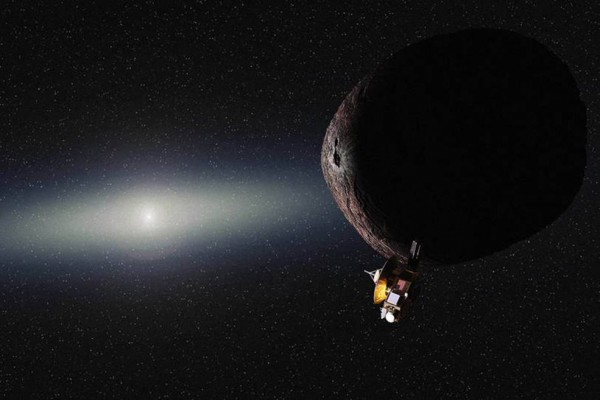By Ana Verayo, | April 08, 2017

This special Kuiper Belt Object (KBO) is known as 2014 MU69 and it was first detected by the Hubble Space Telescope in June 2014. (NASA/JHUAPL/SwRI/Alex Parker)
After reaching Pluto in June 2015, NASA's New Horizons spacecraft is now halfway to its next target, which is an icy, mysterious rock located in the Kuiper Belt - some 30 astronomical units from the sun. One astronomical unit is equal to 93 million miles.
This special Kuiper Belt Object (KBO) is known as 2014 MU69 and it was first detected by the Hubble Space Telescope in June 2014. The New Horizons spacecraft will rendezvous with this icy rock on January 1, 2019.
Like Us on Facebook
"We have already completed half of this journey to our next flyby, which will become the most distant world ever explored by humans. Later this week, the spacecraft will enter into hibernation mode as it will be conserving power for the next half of the journey towards to MU69," New Horizons principal investigator, Alan Stern of the Southwest Research Institute, said.
In the last 16 months, New Horizons has been analyzing Kuiper Belt objects and has been transmitting data back to Earth after passing by Pluto. Data revealed that the unique environment of the Kuiper Belt is surrounded by charged particles and debris.
According to New Horizons project scientist Hal Weaver from the Johns Hopkins University's Applied Physics Laboratory, this upcoming MU69 flyby in January 2019 will be another crucial event for New Horizons. This mission will become the first one to explore the outer edges of the solar system, the Kuiper Belt.
Apart from MU69, scientists also plan to study more than 20 Kuiper Belt objects to measure the charged particle and dust environment across this icy, ancient region. Scientists believe that this region contains asteroids, comets, icy rocks and dust that are still in a pristine state since the formation of the solar system billions of years ago.
To date, New Horizons is now 5.7 billion miles away from Earth, and radio signals from the spacecraft will have to travel for five hours and 20 minutes back to Earth despite traveling at the speed of light.
-
Use of Coronavirus Pandemic Drones Raises Privacy Concerns: Drones Spread Fear, Local Officials Say

-
Coronavirus Hampers The Delivery Of Lockheed Martin F-35 Stealth Fighters For 2020

-
Instagram Speeds Up Plans to Add Account Memorialization Feature Due to COVID-19 Deaths

-
NASA: Perseverance Plans to Bring 'Mars Rock' to Earth in 2031

-
600 Dead And 3,000 In The Hospital as Iranians Believed Drinking High-Concentrations of Alcohol Can Cure The Coronavirus

-
600 Dead And 3,000 In The Hospital as Iranians Believed Drinking High-Concentrations of Alcohol Can Cure The Coronavirus

-
COVID-19: Doctors, Nurses Use Virtual Reality to Learn New Skills in Treating Coronavirus Patients







